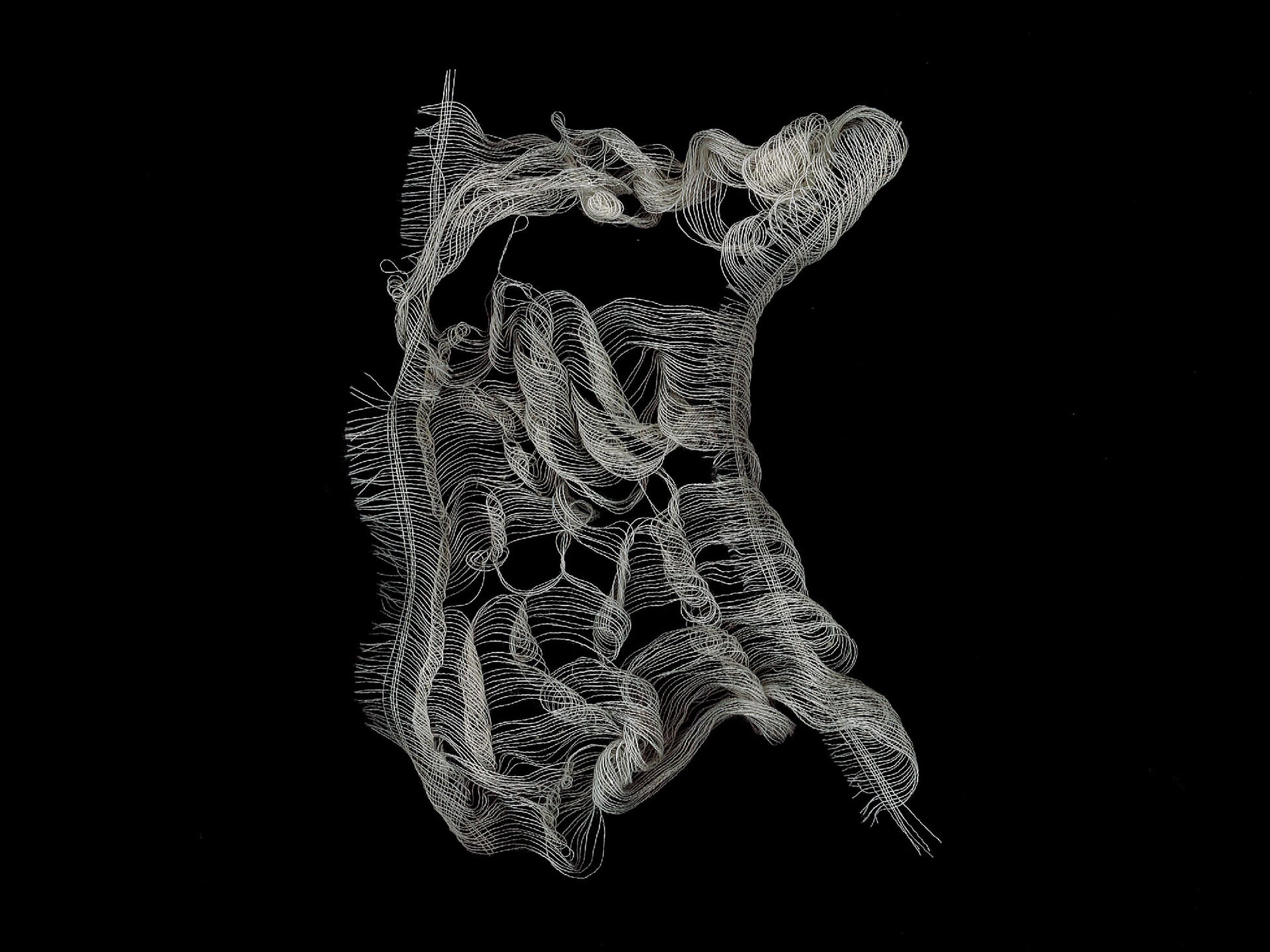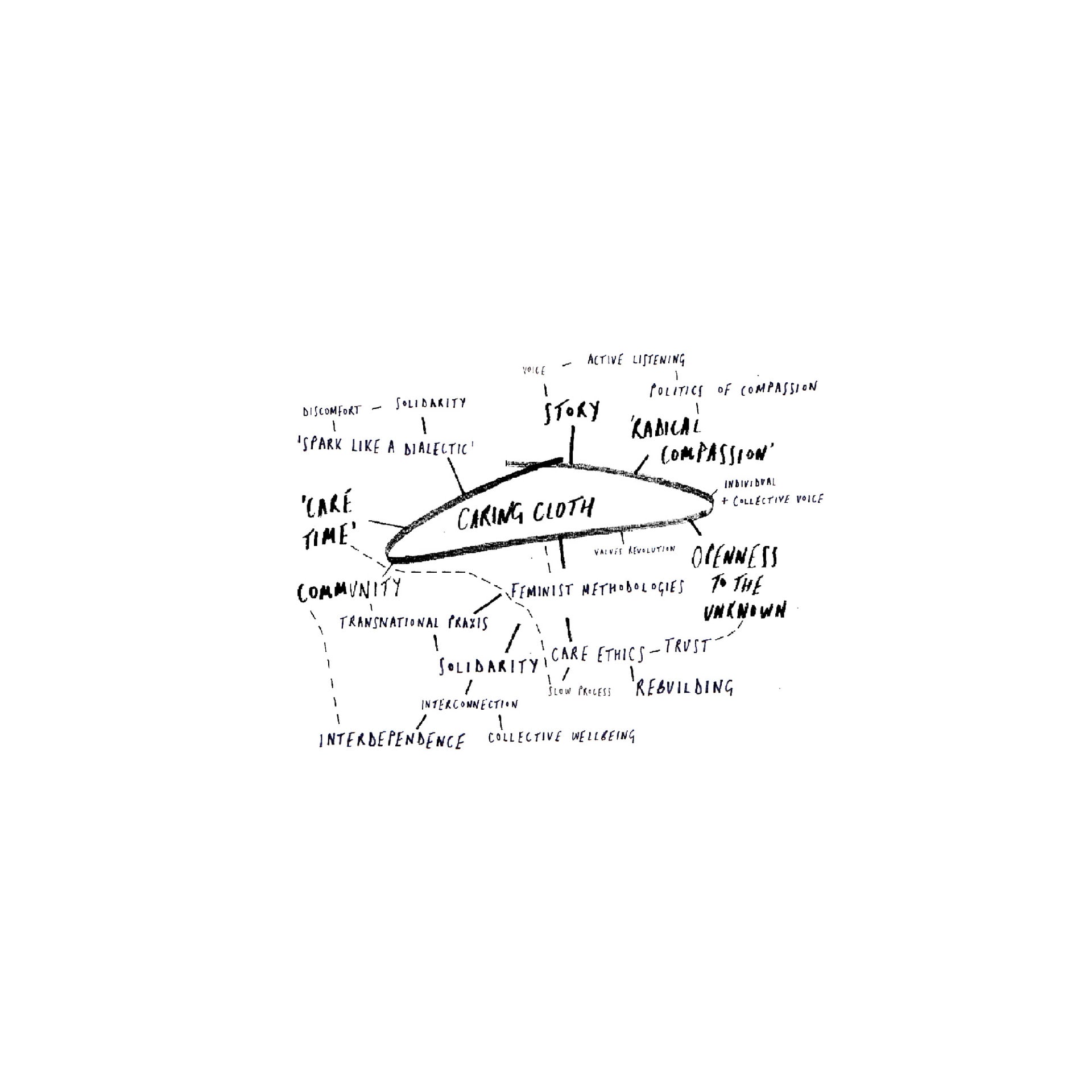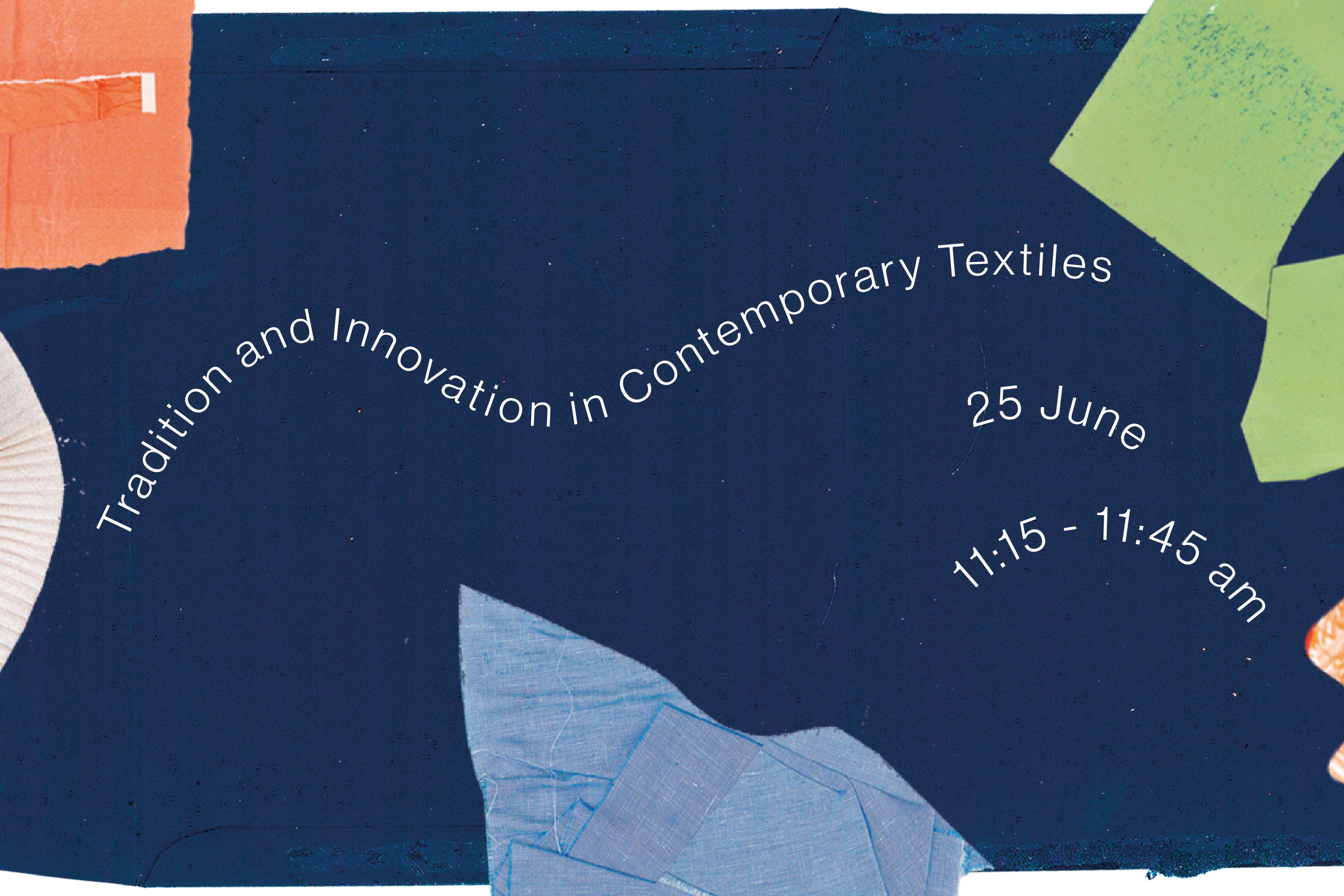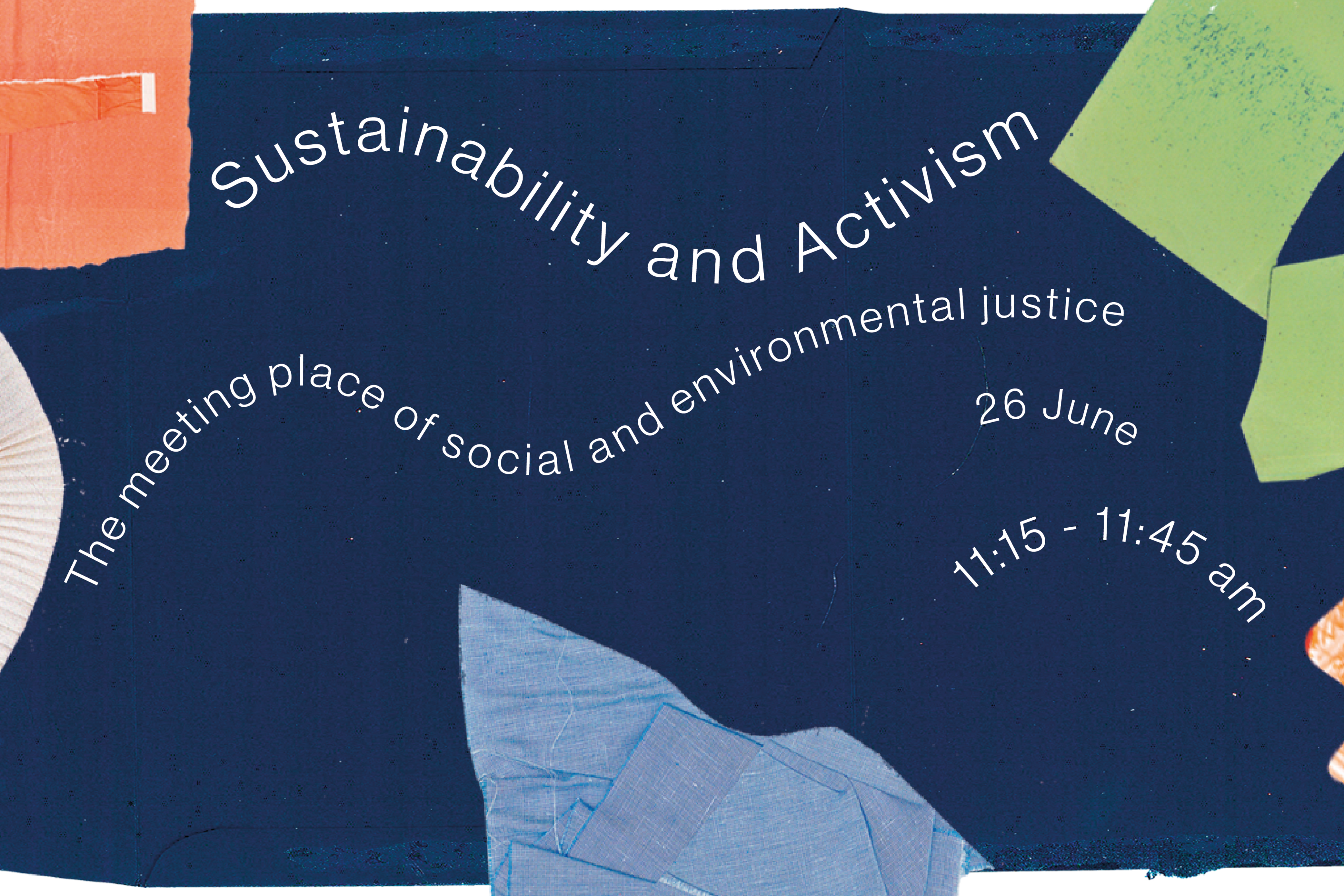Suzanna James work considers the inherent link between women and the handmade. From a background in textile-led social development developed since her undergraduate studies at University of Westminster and Winchester School of Art, her distinction dissertation explores the concept of Caring Cloth praxis, a care-led, socially engaged, intercultural meeting place of research and practice, developed during her Masters at RCA, as a QEST Craft Scholar, Coats Foundation Scholar and Worshipful Company of Framework Knitters awardee.
Suzanna James


To the women underneath the rubble*, this work is a gentle rage.
A rage against the silencing, erasure, disappearance and burial of women.
A response to my initial nine years of observing this in the context of studying and working in the fashion and textiles industry, which relies on 67 million women* in conditions of ‘terminal inequality’*, nameless, faceless, a commodity for production alone. This industry is a picture of the burial of women in endless social, cultural and political contexts.
My blood boils but it has no sound.
It can only be heard through a pile of cloth unraveled.
Perhaps the rage is not so gentle. It is unwound into making something of absences*, it dares expose the beauty and value in the gaps, the edges - a beauty in removal. It is a resistance to those who believe erasure leaves no trace -
when in fact the history of women ,makes itself felt, more than known,* through the presence of absence.
This is an absence which is seen and heard, which speaks even when it’s not spoken to.
Continually informed by devotion*, this work is a homage and a bow, in reverence to the power of absent women. I kneel at the altar of women’s most infamous medium of cloth, which has silently, or not so silently, kept women’s account through history.
I find myself in a role of intimate listening* to the voice of women through cloth.
Sitting and making with women is something that constantly characterises my practice, and in the recent absence of this I have sat in a circle of women’s words and works* which talk to each other in a constant chatter;
knitting a practice which is an ode, a sonnet,
to the ones even underneath the rubble*.
The name of this praxis is Caring Cloth, which has the boldness to claim the potential of care through the making of textiles. It names ‘radical compassion’*, story*, time*, ‘quiet disruption'*, 'delicate activism'*, and 'openness to the unknown'*, amongst its toolkit, and locates itself in sustainability’s social justice*.
Louise Bourgeois’ words ring in my ears, continually informing the praxis of Caring Cloth:
‘The needle is used to repair damage, it's claim to forgiveness’*.











